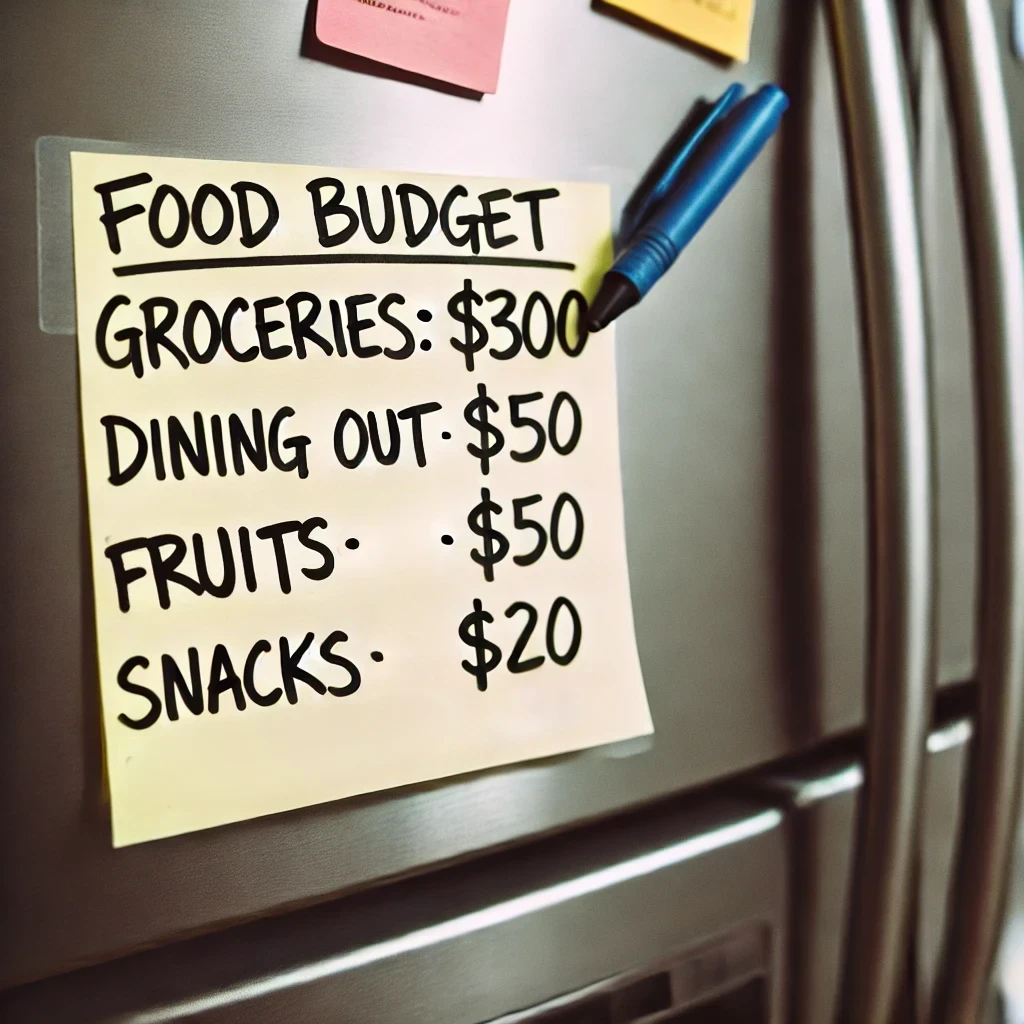Introduction
Planning and shopping for one person presents unique challenges, often leading to overspending or food waste. Crafting an effective and budget-friendly grocery shopping list tailored for one person can streamline the process, ensuring that only necessary items are purchased and money is saved. This article will explore strategies and tips to create a personalized grocery list that meets dietary needs and preferences while maintaining a realistic budget.
Importance of a Grocery Shopping List
Creating a grocery shopping list offers significant organizational benefits, helping to stay organized and reducing impulsive purchases. With a well-planned list, navigating the store becomes more efficient, and there is a clear focus on what is needed, avoiding unnecessary trips down aisles filled with tempting, non-essential items. This strategic approach not only saves time but also ensures that meals and ingredients are planned in advance, promoting healthier eating habits.
Financial benefits are another crucial aspect of maintaining a grocery shopping list. By sticking to the list, it is easier to adhere to a budget, making it less likely to overspend on spontaneous buys. This methodical shopping reduces the chances of purchasing items that may go to waste, thereby cutting down on food waste and unnecessary expenses. Over time, this disciplined approach to grocery shopping contributes to significant savings, making it easier to manage finances and allocate funds to other important areas.
Assessing Your Monthly Food Needs
Understanding consumption patterns is essential when planning a monthly grocery shopping list for one person. Estimating the amount of food needed for a month involves analyzing current eating habits, considering the frequency of meals, and identifying commonly consumed items. Keeping a food diary for a week can provide valuable insights into typical consumption levels, helping to project the necessary quantities for a full month. This practice ensures that the grocery list includes adequate amounts of staple foods while preventing overbuying.
Dietary requirements play a crucial role in shaping the grocery list. Specific dietary needs or restrictions, such as gluten-free, vegetarian, or high-protein diets, must be taken into account to ensure that nutritional needs are met. This involves selecting appropriate substitutes for restricted items and incorporating a variety of foods that align with personal health goals. Careful consideration of dietary preferences and needs helps in creating a balanced and satisfying grocery list that supports overall well-being.
Crafting a Monthly Grocery Shopping List
Creating a monthly grocery shopping list for one person involves categorizing and itemizing food essentials to ensure a balanced diet and efficient shopping experience. Start by organizing the list into key categories: fruits, vegetables, proteins, dairy, grains, snacks, and beverages. This method ensures that all nutritional needs are covered while making it easier to navigate the store. For example, under fruits, include items like apples, bananas, and berries; for vegetables, list options such as carrots, spinach, and bell peppers; proteins might include chicken, tofu, and beans; dairy can cover milk, cheese, and yogurt; grains could consist of rice, pasta, and bread; snacks might be nuts, granola bars, and crackers; and beverages could include coffee, tea, and juice. Structuring the list this way helps to maintain a balanced diet and prevents the omission of any food group.
A budget-friendly grocery list focuses on maximizing savings without compromising on quality and nutrition. Begin by identifying stores with the best deals and taking advantage of sales and discounts. Using coupons can further reduce costs, and many stores offer digital coupons that can be easily accessed through their apps or websites. Buying in bulk for non-perishable items and opting for store brands instead of name brands are additional strategies for cutting costs. Planning meals around sale items and seasonal produce can also lead to substantial savings. For instance, purchasing fruits and vegetables that are in season not only ensures fresher produce but also comes at a lower cost. Regularly reviewing and adjusting the list based on these strategies helps to stay within budget while still acquiring all necessary groceries.
By focusing on these elements, the grocery shopping process becomes more efficient and cost-effective, ultimately leading to better financial management and healthier eating habits.
Creating a Monthly Vegetables List
Choosing vegetables that are in season is a practical and economical approach to creating a monthly vegetables list. Seasonal produce is often fresher, more flavorful, and less expensive than out-of-season options. For example, opting for root vegetables like carrots and potatoes in the fall, or leafy greens and tomatoes in the summer, can significantly cut costs and enhance the quality of meals. Local farmers’ markets or the seasonal section of the grocery store are great places to find the freshest seasonal produce.
Proper storage techniques are crucial to ensure that vegetables last the entire month. Different vegetables have different storage needs to maintain their freshness and nutritional value. Root vegetables such as potatoes, carrots, and onions should be kept in a cool, dark place, while leafy greens like spinach and lettuce are best stored in the refrigerator in airtight containers or wrapped in damp paper towels to retain moisture. For vegetables like tomatoes and avocados, counter storage is ideal until they ripen, after which they can be refrigerated to extend their shelf life. Using these storage tips helps minimize waste and ensures a steady supply of fresh vegetables throughout the month.
Focusing on these strategies while creating a monthly vegetables list not only enhances the overall quality of meals but also contributes to significant savings and reduced food waste.
Customizing Your List for Personal Preferences
Incorporating favorite foods into your grocery list is key to maintaining motivation and enjoyment in your meals. Including items you love ensures that you look forward to your meals and stick to your plan, reducing the temptation to stray from your budget or opt for less healthy options. For instance, if you enjoy snacking on certain fruits or have a favorite type of cheese, make sure these items are regularly included in your shopping list. This personal touch not only keeps your diet satisfying but also helps in adhering to your budget by preventing impulsive purchases.
Meal planning is another essential aspect of customizing your grocery list. By planning meals for the entire month, you can create a comprehensive list that covers all ingredients needed, reducing the likelihood of last-minute takeout or additional trips to the store. Start by outlining your meals for each week, considering breakfast, lunch, dinner, and snacks. This approach allows you to identify overlapping ingredients and purchase in bulk, saving money and ensuring you have everything needed to prepare balanced meals. Additionally, meal planning helps in managing portion sizes and reducing food waste, as you can plan to use perishable items within their shelf life. With a well-thought-out meal plan, grocery shopping becomes more efficient and aligned with your dietary goals and preferences.
Sample One-Month Grocery Lists
Creating sample one-month grocery lists tailored to different dietary preferences can make meal planning more manageable and enjoyable. Here are a few example lists to consider:
Vegetarian Grocery List
- Fruits and Vegetables:
- Apples, bananas, oranges
- Spinach, kale, lettuce
- Carrots, bell peppers, tomatoes
- Broccoli, cauliflower, zucchini
- Proteins:
- Tofu, tempeh
- Beans (black beans, chickpeas, lentils)
- Eggs
- Grains:
- Quinoa, brown rice, whole-wheat pasta
- Bread, tortillas
- Dairy/Alternatives:
- Milk or plant-based milk
- Cheese, yogurt
- Snacks:
- Nuts, seeds
- Hummus, whole-grain crackers
- Beverages:
- Coffee, tea, juice
High-Protein Grocery List
- Fruits and Vegetables:
- Berries, apples, bananas
- Leafy greens, bell peppers
- Asparagus, green beans, carrots
- Proteins:
- Chicken breast, lean beef, turkey
- Fish (salmon, tuna)
- Eggs
- Greek yogurt, cottage cheese
- Grains:
- Oats, quinoa, brown rice
- Whole-grain bread
- Dairy/Alternatives:
- Milk or high-protein plant-based milk
- Cheese
- Snacks:
- Protein bars, jerky
- Nuts, seeds
- Beverages:
- Protein shakes, smoothies
Budget-Conscious Grocery List
- Fruits and Vegetables:
- Seasonal fruits like apples and oranges
- Carrots, potatoes, onions
- Cabbage, spinach, frozen vegetables
- Proteins:
- Canned beans, lentils
- Eggs
- Chicken thighs, ground turkey
- Grains:
- Rice, pasta, oats
- Bread
- Dairy/Alternatives:
- Milk or plant-based milk
- Budget-friendly cheese, yogurt
- Snacks:
- Popcorn, pretzels
- Homemade trail mix (nuts and dried fruit)
- Beverages:
- Tea, homemade iced tea, water
Adaptability
These sample lists can be modified to suit specific needs and preferences. For instance, a vegetarian who prefers more plant-based proteins can add more varieties of beans or try different tofu recipes. A high-protein list can include more dairy alternatives or lean cuts of meat. For those on a tight budget, consider buying in bulk, opting for store brands, or focusing on cost-effective staples like rice and beans.
Incorporating personal preferences and dietary needs into these lists ensures a more satisfying and practical approach to grocery shopping. Regularly reviewing and adjusting the lists based on consumption patterns and seasonal availability can also help maintain variety and interest in meals.
Tips for Efficient Grocery Shopping
Shopping Strategy
Lorem ipsum dolor sit amet, consectetur adipiscing elit. Ut elit tellus, luctus nec ullamcorper mattis, pulvinar da
Navigating the store efficiently and sticking to your list is key to successful grocery shopping. Start by organizing your list according to the layout of your preferred grocery store. Group items by category, such as produce, dairy, meats, grains, and frozen foods. This reduces the time spent backtracking through aisles and ensures a smoother shopping experience. Before heading to the store, review the weekly sales and plan your purchases around discounts and promotions. This not only saves money but also helps to avoid impulse buying.
When shopping, stick to the perimeter of the store where fresh produce, meats, and dairy products are typically located, and avoid the inner aisles filled with processed and high-sugar items. Additionally, shopping on a full stomach can help reduce the temptation to buy unnecessary snacks or treats. Bringing reusable bags and knowing your store’s layout further enhance efficiency, making the trip faster and more organized. Lastly, consider using a grocery shopping app to keep track of your list and compare prices on the go.
pibus leo.
Frequency
Deciding whether to shop once a month or break it into smaller, more frequent trips depends on personal preferences and lifestyle. Shopping once a month can save time and reduce the frequency of trips, which is particularly beneficial for those with busy schedules. However, it requires careful planning and proper storage solutions to ensure that perishable items last throughout the month. Investing in high-quality storage containers and learning proper food preservation techniques, such as freezing or canning, can help extend the shelf life of fresh produce and meats.
Alternatively, shopping more frequently, such as once a week, allows for fresher ingredients and less risk of food spoilage. This approach also provides flexibility to adjust the grocery list based on changing meal plans or dietary needs. Smaller, more frequent trips can be less overwhelming and make it easier to take advantage of weekly sales and seasonal produce.
Finding the right balance between the frequency of grocery shopping and the ability to manage and store food effectively is crucial. Whether opting for a monthly or weekly shopping routine, the key is to maintain consistency and adapt the strategy to fit individual needs and preferences. This ensures a steady supply of fresh, healthy foods and better budget management.
Conclusion
Creating and following a grocery shopping list offers numerous benefits, including better organization, financial savings, and healthier eating habits. By carefully planning your meals and shopping trips, you can reduce impulsive purchases, minimize food waste, and ensure a steady supply of nutritious food. Whether you shop monthly or weekly, a well-thought-out list tailored to your dietary needs and preferences simplifies the grocery shopping process and enhances your overall quality of life. Now is the time to start creating your own grocery shopping lists and experience these benefits firsthand. Share your tips and strategies in the comments below to help others optimize their shopping routines. Let’s build a community of savvy shoppers who support each other in maintaining healthy, budget-friendly lifestyles.



